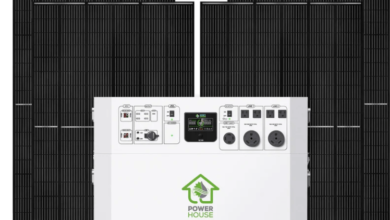Mastering Pond Cleanliness with the Right Large Pond Hoover

Maintaining a clean and vibrant pond isn’t just about aesthetics it plays a vital role in supporting fish, aquatic plants, and a balanced ecosystem. A pond filled with clear water not only enhances the visual appeal of your garden or landscape but also provides a healthy, oxygen-rich habitat for aquatic life to flourish. However, over time, organic debris like fallen leaves, decaying plant matter, fish waste, and invasive algae can accumulate at the bottom, leading to murky water, foul odors, and even harmful bacteria. This buildup doesn’t just affect water clarity—it can disrupt the delicate balance of the pond’s ecosystem, causing stress or illness in fish and stunted growth in plants.
That’s where a large pond hoover becomes a game-changer. Designed specifically to tackle the deep-rooted grime and sediment that standard tools can’t reach, these machines provide an efficient and hassle-free way to restore your pond’s clarity and health. Whether you’re dealing with seasonal sludge or year-round maintenance, the right hoover ensures your pond remains a thriving, low-maintenance centerpiece. This guide explores everything from understanding available models to key features, usage tips, and expert recommendations arming you with the knowledge to make a confident and well-informed decision tailored to your pond’s specific needs.
How a Pond Hoover Transforms Maintenance
Ponds are naturally prone to collecting leaves, sludge, and algae, especially in warmer months. Traditional tools like nets may work for surface debris, but for deep, stubborn buildup, you need something more powerful. A large pond hoover helps eliminate waste from the bottom of the pond, keeping the water clearer and reducing nutrient overload that leads to algae growth.
These devices allow for deeper cleaning without draining your pond or disturbing fish and plant life. With regular use, they reduce long-term maintenance while promoting a healthier aquatic environment.
Exploring the Different Types of Pond Hoovers
Choosing the right hoover starts with understanding the differences in how they work. Large pond hoovers come in several forms, each offering distinct advantages based on your needs.
Manual Hoovers: Budget-Friendly but Labor-Intensive
Manual models are usually more affordable and lightweight, making them suitable for smaller ponds or for tackling localized messes. However, they rely entirely on manual effort—typically via suction created by a hand pump or siphon—so they’re less effective for cleaning large or deep areas.
Electric Hoovers: Power and Efficiency Combined
Electric pond hoovers are equipped with motors that generate powerful suction to lift debris from pond bottoms. They are often the preferred choice for larger ponds thanks to their ability to clean more quickly and efficiently. Many models offer wheeled bases, telescoping handles, and interchangeable nozzles, making them versatile tools for any serious pond keeper.
What to Look for When Choosing Your Large Pond Hoover
To find the best match for your pond, you’ll want to assess several features that directly affect performance, comfort, and value.
Strong Suction Is Non-Negotiable
The effectiveness of a pond hoover hinges on its suction power. High-wattage motors (typically 1200W and above) can remove dense sludge and even heavier particles like small stones. If your pond has frequent algae blooms or heavy debris, stronger suction ensures thorough cleaning with fewer passes.
Adequate Debris Capacity Means Less Interruptions
If you’re working with a large pond, emptying a small debris tank repeatedly can become frustrating. Look for models with large collection chambers or dual-tank systems that allow one chamber to fill while the other empties. Some devices even feature automatic discharge mechanisms to streamline the process.
Easy Handling and Portability
Cleaning a large area requires mobility. Wheeled units and ergonomic handles make it easier to move around the perimeter of your pond. Adjustable-length suction hoses and telescopic rods add reach without requiring you to step into the water. Some advanced models also include carrying straps or detachable parts for compact storage.
Multi-Surface and Multi-Feature Compatibility
A great hoover does more than just suck up sludge. Look for attachments that let you handle string algae, fine sediment, leaves, or gravel. Some models even work across different water features like fountains or water tanks, giving you more value for your investment.
Durability and Long-Term Support
Pay attention to construction materials and motor housing, especially if you plan frequent use. In addition to sturdy build quality, a long warranty period is a good indicator of reliability. Also, check if replacement parts—such as filters or hose extensions—are readily available and affordable.
A Reliable Performer: Spotlight on a Trusted Model
One standout in the category of large pond hoovers is the Oase PondoVac Version 4. Designed in Germany, this model blends power and precision with user comfort. It comes with a robust 1800W motor, a patented two-chamber system for continuous operation, and a range of nozzle attachments for different debris types. Its mobility features, such as wheels and an extendable handle, make it ideal for ponds of all sizes.
Whether you’re dealing with algae mats, fine silt, or fallen leaves, the PondoVac 4 proves reliable season after season.
When and How Often to Use Your Pond Hoover
Cleaning frequency depends on your pond’s size, the surrounding environment, and how many fish or plants it holds. Generally, using a large pond hoover at the start and end of the growing season helps maintain optimal conditions. In more debris-heavy settings, monthly or bi-weekly cleaning might be necessary to prevent buildup and maintain water clarity.
Tips for Prolonging the Life of Your Hoover
Taking care of your equipment is just as important as using it properly. After each cleaning session, make it a habit to:
- Rinse out the debris container
- Check and clean any filters
- Inspect hoses for clogs or cracks
- Store it in a dry, sheltered location away from direct sunlight or moisture
By keeping your equipment in good shape, you’ll extend its lifespan and ensure consistent performance.
Clearing Up Confusion
What exactly is a large pond hoover?
It’s a vacuum-style device specially designed to clean ponds by removing organic and inorganic debris from the bottom and surface without harming aquatic life.
Can I use a home vacuum for my pond?
No. Household vacuums are not waterproof and pose electrical risks. Large pond hoovers are designed specifically for underwater use with sealed components and water-resistant motors.
Do all pond hoovers work in deep ponds?
Not necessarily. Depth capabilities vary by model. If you have a pond deeper than two meters, choose a hoover that clearly states it can handle that depth.
Is electric always better than manual?
For large ponds, yes. Electric models offer far more power and convenience, making them a better long-term investment.
How heavy are these machines?
Weights vary, but many electric hoovers come with wheels or adjustable handles to minimize physical strain. Compact designs and thoughtful engineering make even larger models manageable.
Do I need special training to use one?
No, most models are designed for easy setup and use. Clear instructions, intuitive controls, and included accessories make them suitable even for beginners.
Final Thoughts
Caring for your pond doesn’t have to be a time-consuming or physically demanding task. With the right large pond hoover, you can enjoy clear water, healthy fish, and a beautiful landscape without hours of hard labor. By focusing on features like strong suction, large debris capacity, and user-friendly design, you’re investing in both the health of your pond and your own peace of mind.
Choose wisely, care consistently, and your pond will reward you with clarity, tranquility, and thriving life beneath the surface.



